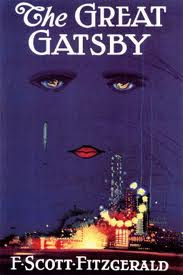Marine biologist Piya travels to the Sundarbans to study the rare Irrawaddy dolphins. Through her research and friendships she learns about the history of the islands in the Sundarbans and the dangers and realities of the people living their fragile lives in a place that’s equally menacing as it is beautiful. With Nature’s sleight of hand, Piya is pulled into unique friendships and an everlasting bond with the people and the place in a way that realizes her true calling. In this engaging and extremely readable novel, Amitav Ghosh lays out the breathtaking landscape of the Sundarbans and walks the reader through its beautiful terrain and ugly patches of history.
World Life
Conservation has a self-righteous and virtuous ring to it. Everyone (almost,
everyone) agrees with it and vehemently advocates it. Ghosh asks a very simple
question through this book – would you believe in wildlife conservation to the
same degree if your family, your livelihood, and your home were nonchalantly treated
as being disposable, or rather, considered inevitable sacrifices in the light
of protecting endangered animals in a beautiful landscape? Hundreds of
thousands of people live in the Sundarbans. However, these people are mostly
viewed as inconveniences, for they come in the way of protecting the tigers and
many other exotic species. Even though people are routinely killed, and their
livelihoods are routinely trampled on, the conservation project carries more
priority than human existence. Something is not right – at least from the
perspective of us humans thinking of human survival. That’s not to say that protecting
animals in their natural habitat is not important. Conserving nature and
wildlife is as important as treating fellow human beings with equal dignity. It
doesn’t seem right to callously sacrifice certain human lives because they are
considered expendable, and then call it the way of nature. Ghosh’s suggestion
is for a more symbiotic, mutually beneficial, mutually helpful approach that
aims at a mostly peaceful co-existence. This is surely the most obvious “answer”
to a complicated situation, but unfortunately not as simple to execute. But it
has to start somewhere.
I have briefly wondered of these repercussions and conflict of interest between human survival and the survival of the eco-system, and it really just boils down to primarily safeguarding the survival of human-beings whilst being as responsible and sensitive as possible to other animals and the ecosystem. Human survival really trumps the card at a deadlock situation, for I am a human being and it's in me to want to protect my species.
I have briefly wondered of these repercussions and conflict of interest between human survival and the survival of the eco-system, and it really just boils down to primarily safeguarding the survival of human-beings whilst being as responsible and sensitive as possible to other animals and the ecosystem. Human survival really trumps the card at a deadlock situation, for I am a human being and it's in me to want to protect my species.
So the crux
of the book explores how and in what ways Wildlife and Nature Conservationism affects
human lives. But Ghosh doesn’t take sides or push his agenda. He has characters
to represent either sides of the argument, but the arguments are always subtly presented
in the background. The book tells a seemingly simple story of love and loss without
hard-hitting arguments or explicit social commentary strewn across the pages. Also, the unfolding
story navigates the reader through real historical events, and questions the
morality behind the occurrences.
Since I love
marine beings, I loved that the protagonist was researching on dolphins, that
too on Irrawaddy dolphins, a species I hadn’t heard of before. It was
fascinating to learn about these dolphins. Ghosh vividly recreates the Sundarbans
and sensitively portrays the characters and their lives. The forest is
portrayed with mysticism and reverence, as if it were a nurturing being of itself.
While I was expecting Ghosh’s writing to be cerebral, pretentious, and
convoluted, I was pleasantly surprised (and grateful) that it was simple,
lucid, and extremely engaging. Although there were aspects of the book that I
thought were too drawn out or uncharacteristically romantic or idealistic, I still
enjoyed reading the book. And it was refreshing to read a story that teases out significant social
themes without weighing down the reading experience with too many layers of
complexity.




